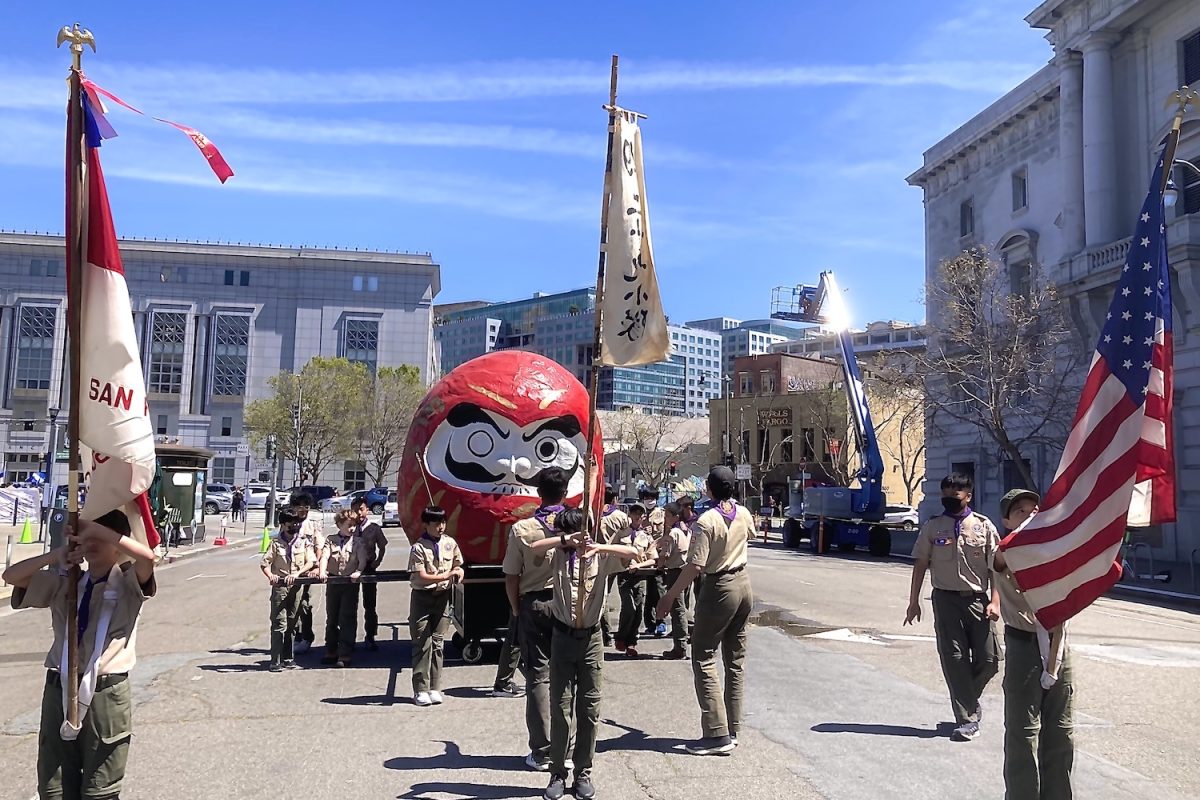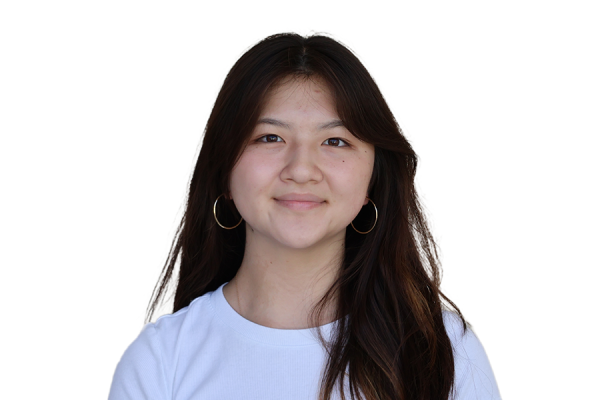Sky-blue flyers adorn Japantown in San Francisco as stores promote the upcoming 57th Northern California Cherry Blossom Festival. In a couple of weeks, the city streets will soon be dotted with sakura blossoms and traditional decorations.
The Cherry Blossom Festival allows people of all cultural backgrounds to enjoy Japanese heritage and culture through traditional street food stands, art and calligraphy displays, and live performances. All the while, visitors can see the once-a-year cherry blossom peak bloom.
The event, which annually draws over 200,000 visitors, is scheduled to occur over two weekends, on April 13-14 and April 20-21.
On the festival’s closing day, a final grand parade of floats, classical and folk dancers, and taiko drummers will march an uphill over a one-mile route from the Civic Center Plaza to Japantown.
Various Japanese community groups and cultural organizations will carry floats on their shoulders, shouting in unison, similar to the lively nature of matsuris in Japan.
“Back in the ’60s, or ’70s, one of the parents in the troop made a giant paper mache daruma. We place it on a large black wagon and push it to the city hall before the parade. There are always around 50 different groups that gather there,” said Tyler Tachiki, a sophomore and the Japanese Culture Club vice president at Carlmont High School.
Tachiki is also a 7-year Buddhist Church of San Francisco (BCSF) Boy Scout troop member. BCSF Troop 29 carries the daruma float, flags, and banners for the festival parade yearly to honor Japanese heritage.
According to Tachiki, the BCSF troop, founded in 1932, initially worked to engage youth from numerous local Japanese American families. Now, it allows individuals from third-generation or fourth-generation families to still connect with Japanese culture.
“The Cherry Blossom Festival exposes San Francisco to a lot of Japanese culture. It’s one of the biggest cultural events, and it’s right in the center of the city, so it’s accessible to many people,” Tachiki said.
The parade is only the final attraction: the festival features various traditional performances, between arts and crafts displays and classical and modern Japanese instrumental music.
“I attended the festival when I was younger, but I’m participating this year for the first time. I will be playing koto; my teacher gathered people and signed us up for the event,” said Ayumi Sandez, a Japanese European-Hispanic senior at Carlmont and a traditional koto musician.
According to Sandez, the festival gets exceptionally crowded, and it’s not just Japanese Americans who attend.
Performers walk around before their shows, and attendees sometimes wear yukata, a traditional lightweight garment similar to a kimono. Some also wear anime cosplays to the festival to show their appreciation for Japanese pop culture.
“The festival promotes cultural appreciation by showing Japanese culture to people who haven’t been able to go to Japan before since it’s probably hard to experience these types of activities elsewhere. The Sakura Festival has almost everything Japan has: it has the same activities and similar traditions. So, I feel like they get to experience at least a bit of what Japan is like,” Sandez said.
In addition to live music, this year’s festival will feature a martial arts showcase.
“I participated in the festival last year as part of a performance with my dojo in front of a large audience. It was a 45 to 30-minute performance where people with different belts went at different times,” said Lucas Kishore, a junior at Carlmont and a brown belt with a black stripe at a Kyokushinkai karate dojo.
According to Kishore, his dojo dedicates a portion of class time to practice for the festival. His martial arts teacher estimates that 20,000 people will watch their performance.
“Usually, there’s someone that breaks a bunch of ice with their hands,” Kishore said.
Kyokushinkai is a style of karate that originated in Japan but has spread to places like San Francisco. By performing, Kishore doesn’t believe his studio will inspire people to join but rather allow them to appreciate Japanese culture by demonstrating an aspect of it.
“Martial arts, in general, teaches you many things, not just self-defense and exercise. Everyone says it’s all about fighting, but I think it’s all about discipline, effort, and respect,” Kishore said.
In contrast to Kishore’s dojo’s preparation, Tachiki claims that carrying the float doesn’t require practice, as the task is pretty straightforward. He fondly reminisced about how fun it was to spin the daruma at the street corners.
The Northern California Cherry Blossom Festival will have something for everyone, between the tasty takoyaki and okonomiyaki from vendors, engaging live performances, the grand float parade, or simply enjoying the beauty of cherry blossoms.
“When I was younger, I wore a yukata to the festival. I remember my mom guiding me through a crowd and seeing the taiko drummers and floats. The entire place is decorated, so you can take many pictures,” Sandez said, who plans to walk around the festival after her performance with some friends.























